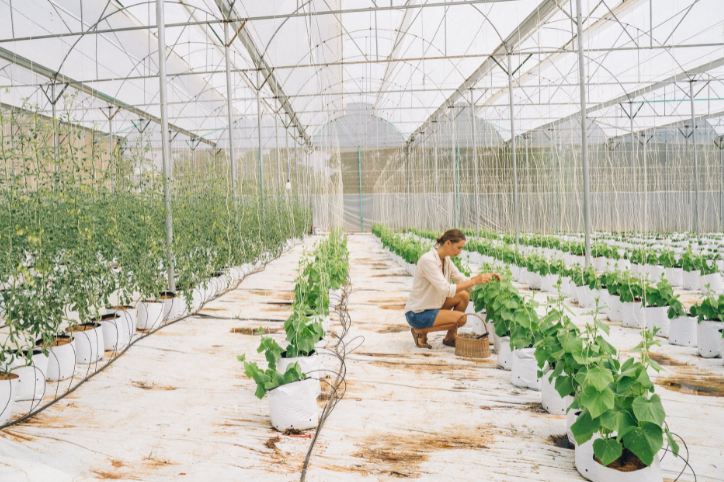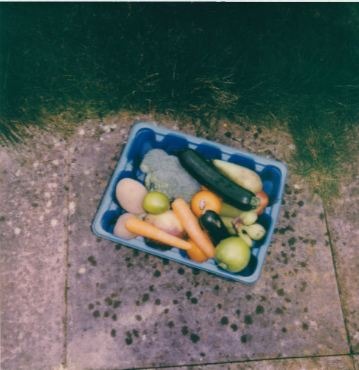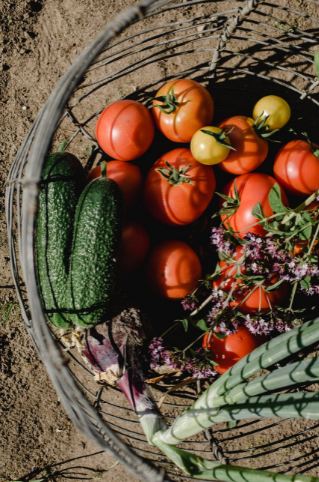Planning out a garden for your own family can be a bit technical, but it is worth the time and effort. Depending upon your family size and your current garden, you might need some extra space to fulfill your dream of an optimal garden.
Are you tired of buying and eating fruits and vegetables contaminated with chemicals and whatnot? Are you planning on making a garden of your own with fruits and vegetables that you and your family can eat all year? Or do you want to plan out an aesthetically pleasing garden that you and your family can relax in? Read through for all the information you need to gather before planning your garden
Learn all about the recommended garden size, which crops to plant and when, how to get the most out of your garden, and how to preserve your harvest, so hop in, and let’s start your journey on how big of a garden you need for your family.
Size of the Garden
Generally, two hundred square feet per person is required to fulfill the dream of planting and harvesting for your family. For a family of four, eight hundred square feet of the garden is needed. A plot with measurements twenty by forty feet would do just fine. You can adjust and calculate the area you need depending upon the size of your family.
Remember that some crops need more space than the others, such as sprouts, Brussels, and asparagus, so make sure to plan on having some extra square feet for your garden.
Plantation
You need certain essential items to start your vegetable garden, such as different types of vegetables, fruits, and other materials. Your plantation depends on these three things. A single plant can either produce a lot or little, depending upon its growth and care.
Always focus on planting things that your family likes. Does your child love asparagus? Plant as much as you can. Concentrate on what your family likes will benefit you and prevent you from wasting it. While planting the things your family likes, always make sure you plant other things to add variety to your garden. Making your garden a family affair will only make them eat what they want and disregard other vegetables.
It would be best if you do some research on your area’s weather to know what plants to go for. If your area goes through harsh cold weather, you might not grow anything for most of the year. One way to overcome this is to preserve some of your summer crops for winter. Looking to preserve crops, you might start thinking about adding a few extra plants.
For a typical family, you can plant about 10 to 15 plants of bell pepper, 12 to 15 plants of broccoli, 12 to 16 carrots, 40 to 50 plants of corn, 4 to 6 plants of cucumbers, 6 to 8 plants of eggplant, 20 to 30 feet long lettuce, 4 to 6 plants of melons, 40 to 50 plants of potatoes, 30 to 40 feet long spinach, 4 to 6 plants of squash, 5 to 8 plants of tomatoes and 4 to 8 plants of zucchini. Make sure to either have a big enough garden for these plantations or cut down on the amount planted.
Getting the most out of your Garden
Quality of seeds and soil, water, weather, and spacing are the key factors in seasonal yield. The weather is uncontrollable, but there are certain things that you can control to increase production every year.
If a crop is harvested and is expected to produce no longer, pluck it out, use it as compost or plant it elsewhere and plant another crop in its place. To extend the harvest, stagger plants for approximately two to three weeks and plant different varieties of the same crop, such as planting the same crop from different age groups. This planting method is commonly known as succession planting.
Depending upon the length of the season, you have to be careful in choosing plants for the second or third time. Start planting cool-weather crops such as leafy greens, root vegetables, and broccoli if your second or third planting occurs at the end of the season. Look for different varieties that can overcome winter and produce in early spring.
Make sure to try the intercropping method. In this method, you plant crops that vary in size and age because later, this will increase the yield of your garden. For instance, if you see your Brussels crops are at their peak, plant radishes or lettuce in between them.
Always make sure to harvest early and consistently. It is advisable to pick one or two vegetables once a day or after every two days. This will, in return, boost production.
Preserving Harvest
If you are going to experience a harsh winter, there are several ways you can prevent and store your harvest. Freezing is one of the easiest options. No special equipment is required for it. Gather all the vegetables and fruits that you want to preserve. Assemble them in a freezing back according to the serving size and put them in a freezer.
Another method of preserving is canning. Canning is a bit of a technical process, and it is only suggested to people who know how to do it properly. However, nothing is impossible. There are several videos, types of research, and classes available for you to understand how to do canning properly.
Another method of preserving is drying. Although it is a bit less common, people still do it to preserve their crops. Dried fruits are light in weight, and they don’t take much of your space. You don’t have to worry about them even if the power goes out, as drying is natural and doesn’t require electricity.
Conclusion
A garden is very beneficial for your family. Make sure that you save a lot of space for it. You can calculate the area required for your family with the methods mentioned above.
If you have the space and are planning to go for a considerable garden for your family, you can look at some of the largest farms in the world to enhance your knowledge on big farms and all about them.







